Travel Guide: Valparaíso
Questions This Article Answers
Where to see the best street art in Valparaíso?
What’s the history of Valparaíso?
What are the most famous local landmarks in Valparaíso?
Where to find Pablo Neruda’s house in Valparaíso?
What are Valparaíso’s funiculars?
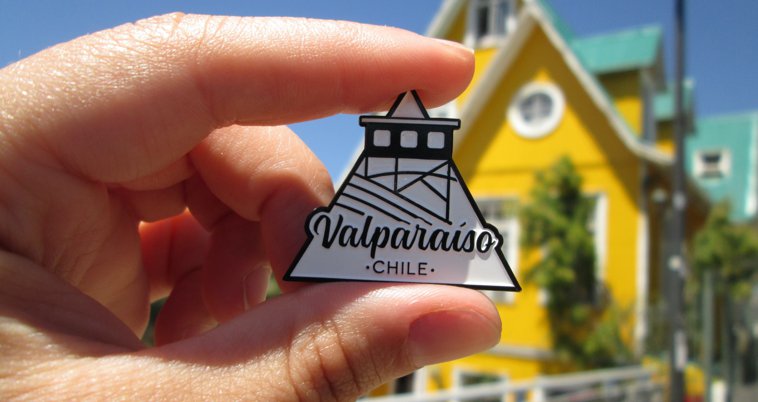 Valparaíso was founded in 1536 by the Spanish conquistador Juan de Saavedra(Juan de Saavedra), who named it after his birthplace, Valparaíso de Arriba(Valparaíso de Arriba), in Spain. The city grew rapidly in the 19th century as it was an important stop for ships traveling between the Atlantic and Pacific oceans via the estrecho de Magallanes(Strait of Magellan).
Valparaíso was founded in 1536 by the Spanish conquistador Juan de Saavedra(Juan de Saavedra), who named it after his birthplace, Valparaíso de Arriba(Valparaíso de Arriba), in Spain. The city grew rapidly in the 19th century as it was an important stop for ships traveling between the Atlantic and Pacific oceans via the estrecho de Magallanes(Strait of Magellan).
By the late 19th century, Valparaíso was enjoying a bit of a golden age, so much so that it was dubbed the joya del Pacífico(jewel of the Pacific). The opening of the Panama Canal in 1914 proved to be a major blow, however, as it greatly reduced the amount of maritime traffic passing through the city. This, combined with economic downturns, would put an end to that golden age.
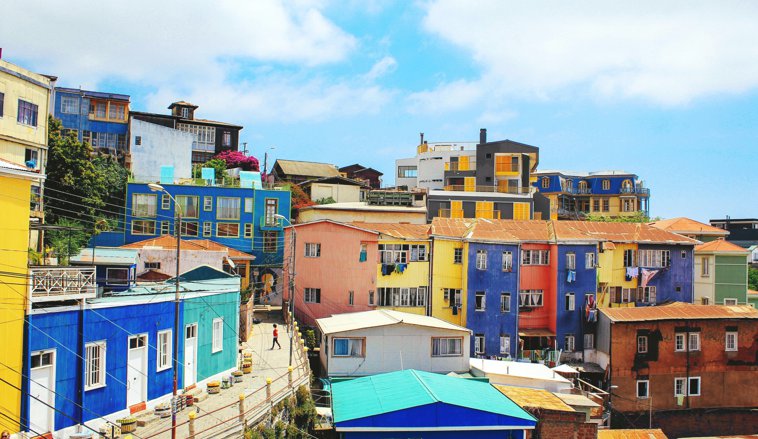
Today, Valparaíso remains an important port city, though its economy is now more diversified. Every year, the city attracts thousands of tourists who are drawn to its bohemian culture, colorful hillside houses, and omnipresent street art. If you are among the thousands planning on making a visit to Valparaíso soon, here are six of the top things to see and do in this fascinating city!
1. Valparaíso Street Art
 One of the most enjoyable things to do in Valparaíso is simply wandering through its streets because it is, quite literally, an urban canvas.
One of the most enjoyable things to do in Valparaíso is simply wandering through its streets because it is, quite literally, an urban canvas.
As you walk around, you'll see a variety of street art, from large murals to smaller, intricate pieces, depicting everything from local history to abstract designs. This street art is a highlight of the city, showcasing the work of both emerging talents and renowned artists like INTI(INTI).
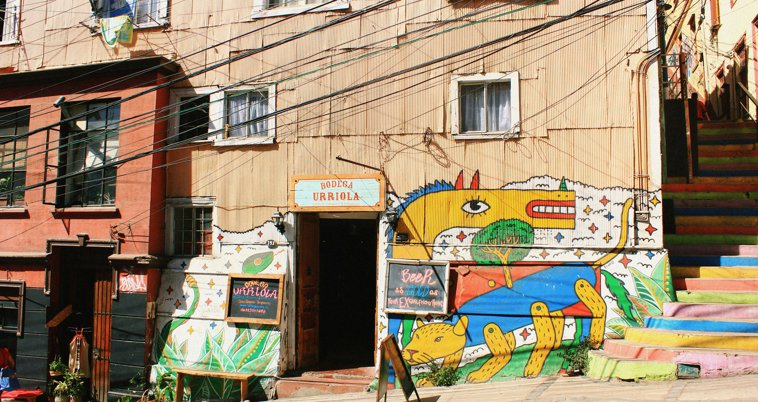 If you like street art, you should check out the Museo a Cielo Abierto(Open Sky Museum). Located in Cerro Bellavista(Bellavista Hill), it’s an outdoor museum displaying large murals by notable Chilean artists such as Roberto Matta(Roberto Matta). There are also guided street-art tours through which visitors can experience the most iconic murals around the city.
If you like street art, you should check out the Museo a Cielo Abierto(Open Sky Museum). Located in Cerro Bellavista(Bellavista Hill), it’s an outdoor museum displaying large murals by notable Chilean artists such as Roberto Matta(Roberto Matta). There are also guided street-art tours through which visitors can experience the most iconic murals around the city.
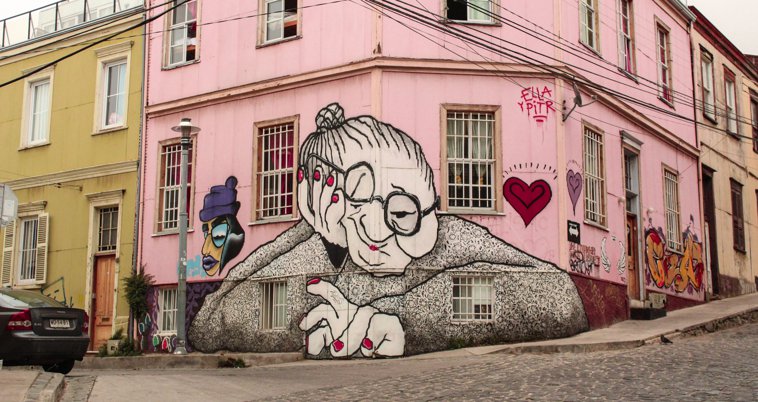
2. The Two Most Popular Neighborhoods
The neighboring hills of Cerro Concepción(Concepción Hill) and Cerro Alegre(Alegre Hill) are probably Valparaíso's most famous neighborhoods. Known for their steep streets lined with colorful houses, the neighborhoods are also among the most culturally rich in city.
Cerro Concepción is famous for its diverse architecture, and many of the buildings have been converted into boutique hotels, cafés, and art galleries. Walking through its streets, you'll find a range of dining options, from traditional Chilean cuisine to international fare, all set against the backdrop of stunning views of the Pacific Ocean.
Cerro Alegre is equally picturesque and has a decidedly artistic vibe. You’ll see a lot of impressive street art around here, so it’s no surprise the hill is a favorite spot for photographers and art lovers.
Here are some of the most notable places in these two neighborhoods:
3. Funiculars
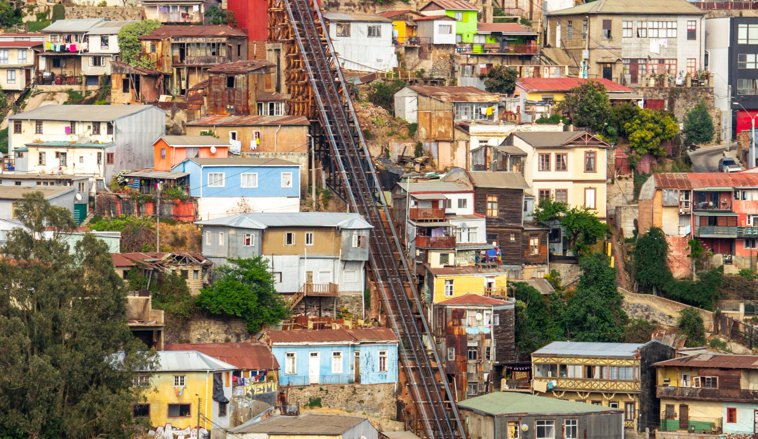 While walking around Valparaíso is a treat, the port is known as the city of hills for a reason; there are more than 40 of them! Navigating these hills would have been a daunting task back in the day without the city's iconic ascensores(funiculars). Most of the funiculars are over a century old, and many are no longer in operation. The ones that are operational provide not only an easy way to climb the steep hills but also a fun way of getting panoramic views of city.
While walking around Valparaíso is a treat, the port is known as the city of hills for a reason; there are more than 40 of them! Navigating these hills would have been a daunting task back in the day without the city's iconic ascensores(funiculars). Most of the funiculars are over a century old, and many are no longer in operation. The ones that are operational provide not only an easy way to climb the steep hills but also a fun way of getting panoramic views of city.
Among the most famous ascensores are the Ascensor El Peral(literally, the Pear Tree Funicular), the Ascensor Concepción(Concepción Funicular), the Ascensor Reina Victoria(Queen Victoria Funicular), and the Ascensor Artillería(literally, Artillery Funicular).
4. Famous Poet's Home
La Sebastiana(La Sebastiana) is one of three houses Nobel poet laureate Pablo Neruda(Pablo Neruda) owned in Chile. He bought it in 1959 as he wanted a place where he could escape from the chaos of Santiago(Santiago). Located in Cerro Florida(Florida Hill), the house is now a museum and offers insights into Neruda’s life, with rooms filled with his personal items and art.
5. Sotomayor Square
Plaza Sotomayor(Sotomayor Square) is a central square surrounded by several important buildings, including the Edificio de la Comandancia Naval(Chilean Navy Headquarters) and the Corte de Justicia(Court of Justice). The Monumento a los Héroes de Iquique(Monument to the Heroes of Iquique) in the center of the square commemorates the naval Battle of Iquique during the guerra del Pacífico(War of the Pacific).
Guerra del Pacífico
The War of the Pacific, fought from 1879 to 1884, significantly altered the map of South America. The conflict was fought between Chile and its neighbors Bolivia and Peru over control of a resource-rich area in the Atacama Desert. Chile won the war and gained substantial territory from both defeated nations. Bolivia, meanwhile, lost access to the sea, and became, alongside Parguay, one of only two landlocked countries in the Americas. Bolivians remember this loss every year on March 23rd, when they observe the Día del Mar(Day of the Sea).
One of the most notable events of the war was the Battle of Iquique, which took place on May 21, 1879. During the battle, Captain Arturo Prat(Arturo Prat), commanding the wooden Chilean ship Esmeralda(Emerald), engaged the ironclad Peruvian ship Huáscar(Huascar). The Peruvian forces emerged victorious, and Prat was killed during the battle. But his bravery while trying to board the enemy ship made him a national hero back in Chile. The Monument to the Heroes of Iquique is one of the main memorials dedicated to him and his crew.
6. 21st of May Promenade
The Paseo 21 de Mayo(21st of May Promenade), named after the date of the Battle of Iquique, is one of Valparaíso’s most picturesque paseos(promenades). Located atop Cerro Artillería, the promenade offers great views of the port and the bay. The paseo is also home to the Museo Marítimo Nacional(National Maritime Museum), where visitors can learn more about Chile’s rich naval history.
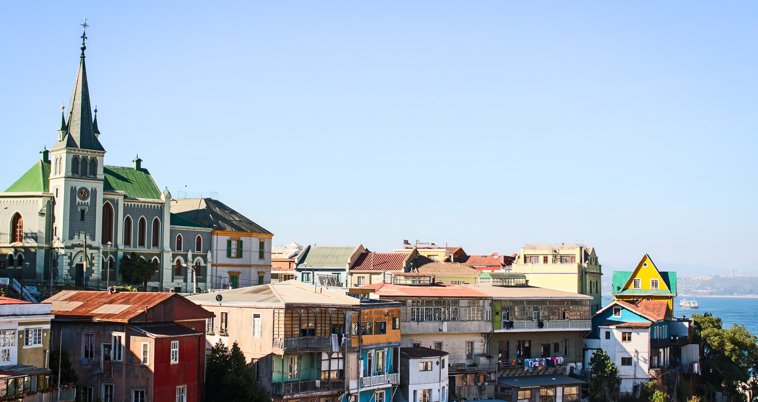 We hope you found these tips on what to see and do in Valparaíso useful! ¡Buen viaje!(Have a great trip!)
We hope you found these tips on what to see and do in Valparaíso useful! ¡Buen viaje!(Have a great trip!)
Interested in more Latin American adventures? Check out these articles for inspiration:














